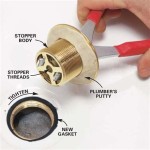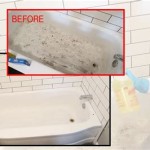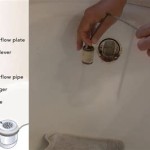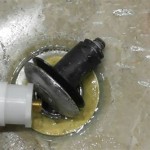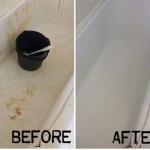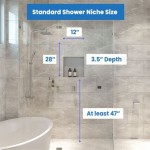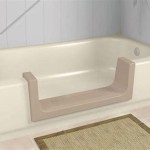Bathtub Surround Shower Walls: A Comprehensive Guide
Bathtub surround shower walls are a common feature in many bathrooms, serving as a protective barrier against water damage while simultaneously enhancing the aesthetics of the space. These walls are designed to fit around a bathtub or shower enclosure, preventing water from splashing onto adjacent walls and floors. The selection of a suitable bathtub surround shower wall depends on several factors, including budget, design preferences, durability requirements, and ease of installation.
The primary function of a bathtub surround is to create a watertight seal, preventing moisture from penetrating the wall cavity. This is crucial in preventing mold growth, structural damage, and potential health hazards. Without a proper surround, water can seep behind the drywall or tile, leading to costly repairs and compromising the integrity of the bathroom structure. Additionally, a well-chosen surround can significantly improve the overall appearance of the bathroom, contributing to a more comfortable and inviting environment.
This article aims to provide a comprehensive overview of bathtub surround shower walls, covering the various materials available, installation considerations, maintenance procedures, and factors to consider when making a selection. Understanding these aspects will enable homeowners and contractors to make informed decisions and ensure a long-lasting and functional bathroom space.
Material Options for Bathtub Surround Shower Walls
The market offers a diverse range of materials for bathtub surround shower walls, each with its unique advantages and disadvantages. The choice of material will largely influence the cost, durability, maintenance requirements, and aesthetic appeal of the bathroom. Common materials include acrylic, fiberglass, tile, composite materials, and solid surface options.
Acrylic: Acrylic surrounds are known for their durability, non-porous surface, and ease of cleaning. They are resistant to stains, scratches, and mildew, making them a popular choice for many homeowners. Acrylic surrounds are typically molded into single sheets or multiple panels, reducing the number of seams and minimizing the risk of water leakage. They are also relatively lightweight and easy to install, contributing to lower installation costs. The smooth, glossy finish of acrylic provides a clean and modern look.
Fiberglass: Fiberglass surrounds are another cost-effective option, offering a good balance of durability and affordability. They are typically reinforced with acrylic to enhance their strength and resistance to scratches. While fiberglass is less expensive than acrylic, it is also more prone to scratching and fading over time. Regular cleaning is necessary to maintain its appearance. Fiberglass surrounds are often available in a variety of colors and textures.
Tile: Tile remains a classic and versatile choice for bathtub surround shower walls. Ceramic, porcelain, and natural stone tiles are all viable options, each offering unique aesthetic qualities and performance characteristics. Tile provides a wide range of design possibilities, allowing for custom patterns, colors, and textures. However, tile installation can be labor-intensive and requires skilled craftsmanship to ensure a watertight seal. The grout lines between tiles require regular cleaning and maintenance to prevent mildew growth. Properly sealed grout is crucial to prevent water penetration.
Composite Materials: Composite materials, such as solid surface and cultured marble, offer a high-end alternative to traditional acrylic and fiberglass surrounds. These materials are typically made from a blend of resins, minerals, and pigments, resulting in a durable and aesthetically pleasing surface. Composite surrounds are non-porous, resistant to stains and scratches, and easy to clean. They can also be molded into various shapes and sizes, allowing for seamless integration with the surrounding bathroom fixtures. While composite materials are more expensive than acrylic and fiberglass, they offer superior performance and a luxurious appearance.
Solid Surface: Solid surface materials, such as Corian, are known for their seamless appearance and exceptional durability. They are non-porous, resistant to stains and scratches, and easy to repair. Solid surface surrounds can be custom-fabricated to fit any bathroom configuration, creating a clean and contemporary look. While solid surface is one of the more expensive options, its longevity and low maintenance requirements make it a worthwhile investment for many homeowners.
Installation Considerations for Bathtub Surround Shower Walls
Proper installation is critical for the long-term performance and water resistance of bathtub surround shower walls. Whether you opt for DIY installation or hire a professional contractor, understanding the key steps and considerations is essential for achieving a successful outcome. The installation process typically involves preparing the wall surface, fitting the surround panels, sealing the seams, and caulking the edges.
Surface Preparation: The wall surface must be clean, dry, and level before installing the surround panels. Remove any existing tiles, wallpaper, or paint that may interfere with adhesion. Repair any damaged drywall or plaster and ensure that the surface is smooth and even. Applying a waterproof membrane or sealant to the wall surface can provide an additional layer of protection against moisture penetration.
Panel Fitting: Measure the dimensions of the bathtub or shower enclosure and cut the surround panels to fit accordingly. Use a level to ensure that the panels are aligned vertically and horizontally. Dry-fit the panels before applying adhesive to ensure a proper fit. Some surround systems use interlocking panels, while others require direct adhesion to the wall surface.
Adhesive Application: Apply a high-quality waterproof adhesive to the back of the surround panels, following the manufacturer's instructions. Press the panels firmly against the wall surface and hold them in place until the adhesive sets. Use shims or temporary supports to maintain the panels' position during the curing process. Ensure that the adhesive is compatible with the surround material and the wall surface.
Seam Sealing: The seams between the surround panels must be properly sealed to prevent water leakage. Use a waterproof sealant or caulk to fill the gaps between the panels. Smooth the sealant with a wet finger or a caulking tool to create a clean and professional finish. Allow the sealant to cure completely before exposing the surround to water.
Caulking: Apply caulk along the edges of the surround, where it meets the bathtub or shower base and the adjacent walls. This will create a watertight seal and prevent water from seeping behind the surround. Use a mildew-resistant caulk to prevent mold growth in the seams. Regularly inspect the caulk for cracks or damage and reapply as needed.
Professional Installation: While DIY installation is possible, hiring a professional contractor can ensure a higher quality and more reliable result. Professional installers have the experience, tools, and expertise to properly prepare the wall surface, fit the surround panels, and seal the seams. They can also address any potential issues or challenges that may arise during the installation process. Professional installation may come with a warranty, providing added peace of mind.
Maintenance and Care of Bathtub Surround Shower Walls
Proper maintenance and care are essential for preserving the appearance and longevity of bathtub surround shower walls. Regular cleaning, prompt repairs, and preventative measures can help prevent mold growth, water damage, and other issues that can compromise the integrity of the surround. The specific cleaning and maintenance procedures will vary depending on the material of the surround.
Regular Cleaning: Clean the surround regularly with a mild detergent and a soft cloth or sponge. Avoid using abrasive cleaners or scouring pads, as these can scratch or damage the surface. Rinse the surround thoroughly with water after cleaning to remove any soap residue. Pay particular attention to the grout lines, seams, and corners, where mold and mildew are more likely to grow.
Mold and Mildew Prevention: Prevent mold and mildew growth by ensuring proper ventilation in the bathroom. Open a window or use an exhaust fan to remove excess moisture after showering or bathing. Regularly clean the grout lines with a bleach-based cleaner or a mold and mildew remover. Apply a sealant to the grout lines to prevent water penetration and mold growth.
Scratch and Stain Removal: Acrylic and fiberglass surrounds are susceptible to scratches and stains. Remove minor scratches with a plastic scratch remover or a polishing compound. Clean stains with a mild bleach solution or a specialized stain remover. Avoid using harsh chemicals or abrasive cleaners, as these can damage the surface. Consider using a protective sealant to prevent future stains and scratches.
Caulk Inspection and Repair: Inspect the caulk along the edges of the surround regularly for cracks or damage. Replace any damaged caulk immediately to prevent water leakage. Remove the old caulk with a utility knife or a caulk removal tool. Clean the surface thoroughly and apply a new bead of mildew-resistant caulk. Smooth the caulk with a wet finger or a caulking tool to create a clean and watertight seal.
Panel Repairs: Minor cracks or chips in the surround panels can be repaired with a specialized patching compound or a repair kit. Clean the damaged area thoroughly and apply the patching compound according to the manufacturer's instructions. Sand the repaired area smooth and paint or seal it to match the surrounding surface. For more extensive damage, it may be necessary to replace the entire panel or section of the surround.
By following these maintenance and care guidelines, homeowners can extend the lifespan of their bathtub surround shower walls and maintain a clean, healthy, and aesthetically pleasing bathroom environment.

Award Winning Shower And Tub Walls Surrounds Maax Bathware

Diy Tub Surround Shower Panel Base Kits Innovate Building Solutions

Bath Surrounds Wall Bathtub Walls Planet

White Carrara Thin Stone Tub And Shower Surround Bella Core

Tub Wall Surround The Onyx Collection

Quartz Shower Walls And Tub Surrounds

Shower Wall 10 Tile Trends That You Should Consider Stone Depot

Tub Shower Surround Panels Msi Surfaces

American Standard Elevate 30 In L X 60 W H Arctic White 3 Piece Direct To Stud Glue Up Hybrid Bathtub Wall Panel Kit 2947bwt60 011 At Com

Memphis Wall Surrounds Five Star Bath Solutions Of Tn
Related Posts

